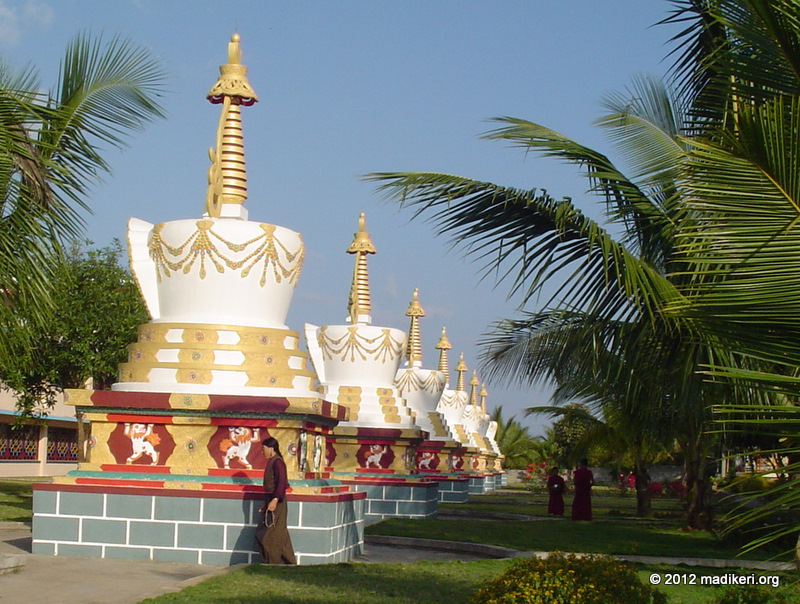Soapstone sculptures
The beauty of the Hoysala templs , particularly its intricate carvings owes a lot to one material - Soapstone. Unlike granite, sandstone and marble used in the construction of most of India's ancient monuments, soapstone is softer with some peculiar properties that set it apar from the former materials. To give you an idea , the softer version of the soapstone can be carved even with your finger nail.
T
he beauty of the Hoysala templs , particularly its intricate carvings owes a lot to one material - Soapstone. Unlike granite, sandstone and marble used in the construction of most of India's ancient monuments, soapstone is softer with some peculiar properties that set it apar from the former materials. To give you an idea , the softer version of the soapstone can be carved even with your finger nail.Technically soapstone contains magnesite, dolomite, chlorite and talc . The content of talc is what gives the soapstone its soft property. Also unlike a lot other stones (marble for example ) , soapstone is inert to chemicals. That is neither its surface color nor the texture changes with exposure of chemicals. Even if it does, the change happens only on the surface layer that can be easily polished off.
This single material has influenced considerably the way Hoysala architecture evolved, particularly the incorporation of jewelry like carvings on the temple walls and the unique circular pillars. The Hoysala artisans could carve even each of the beads on the jewelry on an almost life sized sculptures. This was not that easily possible with other natural materials like granite or marble. In other words the soapstone material offered no limitation to the carpenters and sculpturers in what they wanted to accomplish.
Hoysala crest carved in soapstone Unlike in the case of granite, marble or sandstone sculpturing , working with soapstone needs only less harder tools. The typical spark flying hammer and chisel action is minimal in case of the soapstone sculpturing. Instead, you find more of a scraping process with softer blade like tools in working with soapstone. The artisans use thin and sharp tools to carve out the intricate details. The Hoysala The stone is cut , shaped , scrapped layer by layer to its final finished shape. And finally a coat of oil gives the sculpture its glow and protection.
The Hoysala sculpturers literarily carved the temples with the artistic meticulousness of a goldsmith and the errorless precision of a surgeon combined. No durable materials could have helped them better in the vigorous temple making activity of the times without missing the details.
Soapstone when quarried freshly is relatively soft. Once exposed it starts harden over the years. That is due to two reasons – the oxidation of the constituents and the escape of moisture from the stone. This property too played to the advantage of the Hoysala architects. The damp soapstone freshly cut from the quarry was relatively easy to work with. That would have really aided them to finish those giant pillars of with some sort of lathe operation. Such a process was otherwise unimaginable on a huge granite block or other harder materials.
Hoysalacarving in soapstone (inside temple) The Hoysalas definitely took a cue from the carpentry and extended it into their soapstone work. You can see many concepts of woodwork imitated into stonework in Hoysala temples.
These very great properties of the soapstone proved detrimental to the survival of these sculpture too. While exposure to the open dry atmosphere aided the hardening of the carvings, too much of the contact with the natural elements started eroding the sculptures. This is especially true for the sculptures on the outside the temple walls.
Hoysala carving in soapstone (outside temple) If you make a very rough estimate, an average Hoysala sculpture has faced about 1000 monsoons and as many blistering summer seasons. The drying wind kept blowing all along was not a good thing either.
Lastly the manmade destructions too taken its toll. . Long years of neglect, assault by the invading army and the vandalism had made scars on the soapstone.
The once smooth and glossy surfaces of the soapstone carvings now appear as coarse. Nevertheless they still reserve the right to awestruck you with its grace and sensuality.
To visualize how the whole carvings looked during its finer days, you need to watch the sculptures inside the temples. The temples of Belur and Halebidu are the fine places to start with. The surface quality of the indoor sculptures and carvings are so shiny that one would mistake them for metallic objects.
Freshly cut soapstone has a dull grey color. Once polished it appears with a green tint. By the way it is called soapstone, thanks to is dry soap like tactile feel. Other than that soapstone has no connections with soap.

Stupas at Sera Monastic University
The Tibetan Buddhist prayer stupas at Bylakuppe
